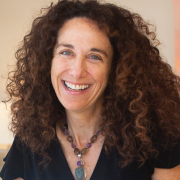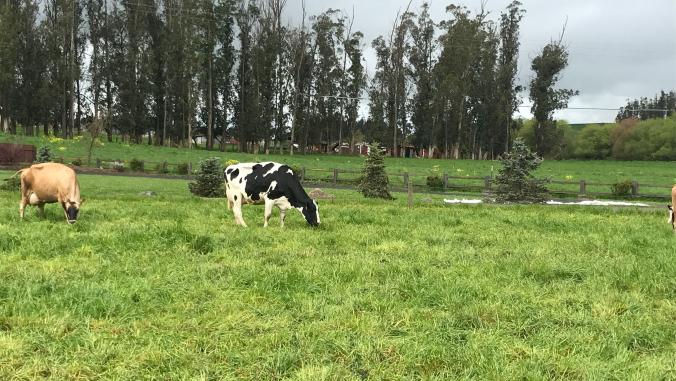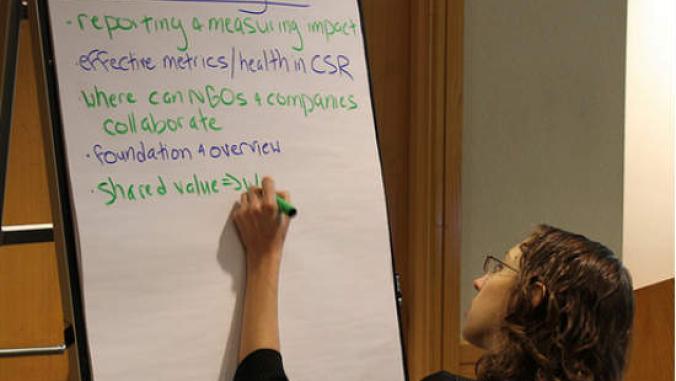Why the local, sustainable food movement is good business
<p>The career path of Siddarth Sanghvi has taken him from eBay to Back to the Roots, where he will help launch the AquaFarm home aquaponics tank.</p>

Siddarth Sanghvi, a 2003 MBA graduate from UC Berkeley's Haas School of Business, recently left his position as GM of sustainable commerce at eBay to join Back to the Roots, a startup. The young company, started by Haas alums Nikhil Arora and Alejandro Velez, focuses on turning waste into local, fresh and sustainable food.
Its initial success was an at-home mushroom growing kit that sells online and in retail stores. Sanghvi's new position as vice president of operations and marketing lands him in the heart of helping Back to the Roots launch its second product: the AquaFarm home aquaponics tank (pictured), a small three-gallon fish tank that allows the owner to grow herbs or other small plants in a closed-loop system that keeps the water clean and the plants thriving.
Sanghvi is not a newcomer to startups. Directly out of Haas, he co-founded World of Good, a fair trade gift company eBay acquired in 2010. We had the chance to speak with Sanghvi about his new position.
Center for Responsible Business: What are the big picture trends you see around the local food movement?
Siddarth Sanghvi: We are at the epicenter of a few powerful trends related to food. One trend is a heightened awareness around healthy eating and knowing the source of our food. The second one, somewhat related, is the locavore movement and sourcing food from local farms and local businesses. Other trends are around good design and education, educating children around the benefits of local, healthy food.
This area of convergence is a pretty good place for us to be in, and I think these trends are only going to grow. I don't even like to call them "trends" as that somehow implies they are ephemeral. As people learn about the negative impacts of fully processed, industrialized food and awareness grows, the heightened awareness here in Bay Area is going to percolate throughout the rest of the country.
CRB: You say a key trend is around "good design." Can you say a bit more about this?
Sanghvi: People appreciate good design. A classic example is Apple, where much thought goes into the product. Nest thermostats and Tesla are two others companies that focus on design as much as performance. More and more people are appreciating form as well as the function and while this combination has gained traction in many other categories, it's not as widespread in the sustainable products category. With the AquaFarm we made a conscious effort to build something that is sustainable and also looks cool -- something that I would want to put in my house. Sustainable doesn't have to be ugly. People are willing to pay for good design and appreciate it.
CRB: What attracted you to work at Back to the Roots, and what are your main responsibilities as vice president of operations and marketing?
Sanghvi: Right after business school, I started World of Good and grew it over six years before selling it. It was a fantastic experience. I was learning a lot, having a ton of fun and I was doing something I was really passionate about. At eBay I was working on how to create more sustainable purchasing experiences and it was definitely intellectually stimulating and a great opportunity to head sustainability at eBay. We were able to build the world's largest green automobile site and build amazing programs with organizations like Patagonia and the Sierra Club. But after a couple of years I really missed the fast-paced environment of a start-up where you can make decisions and changes on a dime -- you can drive things forward much faster and make a bigger impact in a short span of time.
The move to Back to the Roots happened organically. I had known Nikhil since they initially started the company as seniors at Haas and I had kept in touch and had been informally advising them. After a meeting in February where I got a detailed overview of the company and its recent growth, I saw that I could really help them in operations and marketing. While not a typical combination of job titles, because one is more analytical and the other more creative, it was perfect for me as I really enjoy both. The mission really resonated with me as well. Through Back to the Roots, I want to get millions of people to think about what they are eating, where it comes from and how it impacts their environment. I firmly believe that creating awareness around our food supply chain will prompt people to make choices that do less harm and more good.
CRB: What are some of the biggest challenges you face in your new position?
Sanghvi: In operations, we are scaling up really quickly with new product launches and new retail partners. I am focusing on building up the infrastructure and processes so we can fulfill the demand we have, efficiently and cost-effectively. On the marketing side, I'm blessed with having two founders who do an amazing job promoting the company. We have received a ton of earned media, which is great given our relatively small size. Now I want to have our voice and tone and brand catch up -- tighten things up so the website, content and packaging are all consistent.
CRB: When it came time to raise funding for the AquaFarm product, instead of turning to angel investors, Back to the Roots took its story to Kickstarter. Can you talk a bit about crowdsourcing as an investment strategy?
Sanghvi: The AquaFarm is expensive to build. The injection mold for the tank alone cost over $100,000. The Kickstarter campaign served two purposes: to gauge market demand and to raise money to make it a reality. The founders leveraged their networks to the hilt and through the Kickstarter community raised a quarter of a million dollars in 30 days. Most of these funders were investing $50 at a time so they could be the early adopters of the AquaFarm. The campaign really helped us prove there was a huge demand for the product and one unexpected surprise was the incredible feedback we got through the process that allowed us to improve the product significantly before it was finalized. Kickstarter was an important source of funding as we launched this second product as the company is completely boot-strapped. There are no outsider investors and we have been profitable from the first year.
CRB: As you mentioned, it can be harder in a large company to make quick changes and to take risks. How did Back to the Roots make the decision to create a product for an emerging market and take the risk to go for it?
Sanghvi: The AquaFarm is a unique product and defies categorization. This does make it harder to sell in the sense (that) it has to be explained first. However, one way we have been building a lot of momentum is through the media. We have been pitching a wide spectrum of publications ever since the launch in June and have received a ton of PR from national publications including the Wall Street Journal, Forbes, Associated Press. We also have some big names in print and TV lined up for the holiday season. On the sales side, we have partnered with three key retailers -- Nordstrom, Whole Foods and Petco for national distribution. The media and national distribution deals will go a long way in building momentum over time. The three main ways launching the Aquafarm was different from a traditional product launch at a larger company was the speed (faster), budget (tiny) and the relentless push by the founders to get the product in front of the press.
This article originally appeared at Redefining Business, a blog from the Haas Business School's Center for Responsible Business.





